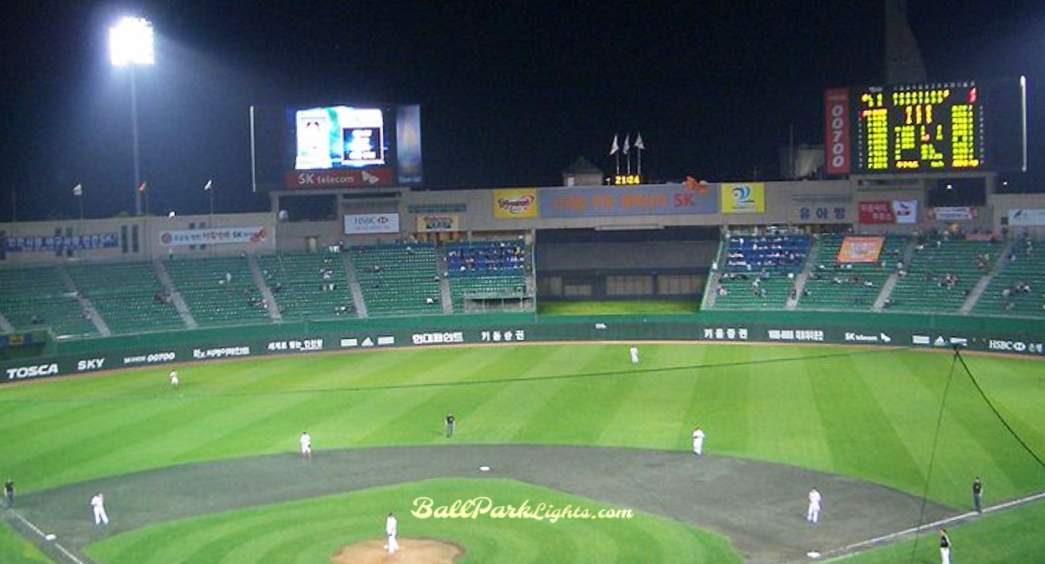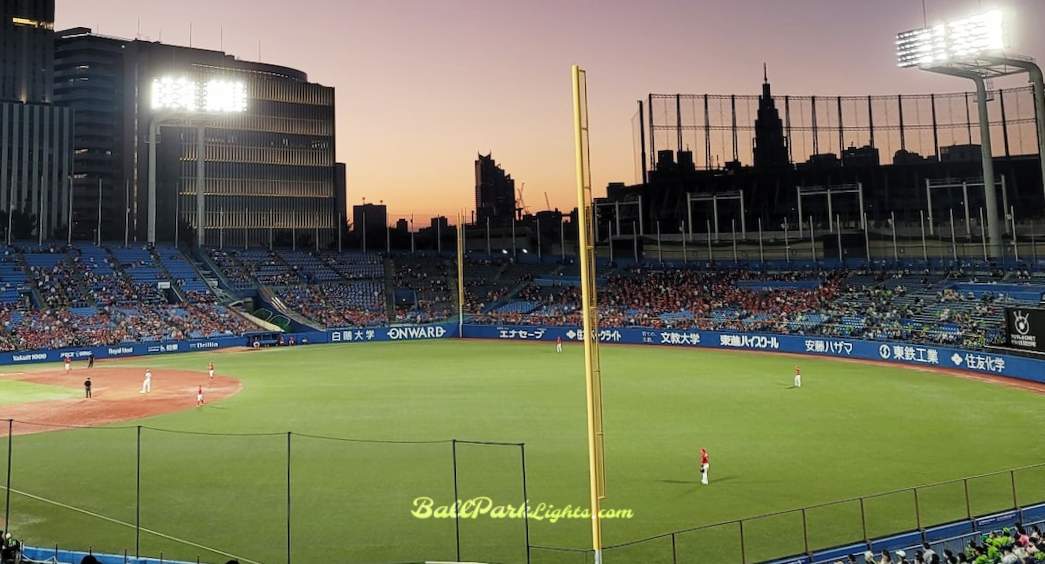Baseball is more than just a game; it’s a celebration of skill, strategy, and community. Yet, the excitement on the diamond can quickly dim when players and spectators grapple with harsh glare from inadequate lighting. By exploring innovative lighting technologies and strategic design choices, baseball fields can transform into dazzling venues that enhance visibility and elevate the game for everyone involved.
Message us to get a free lighting design solution
Proper lighting is an indispensable component of modern baseball fields, affecting not just visibility but also the overall experience for players, spectators, and officials. Glare, defined as excessive brightness that causes discomfort or interference with visibility, poses a considerable challenge in the design and operation of lighting systems for baseball fields. Managing glare effectively is vital for maintaining the quality of play and ensuring a pleasurable experience for all involved.

Table of Contents
ToggleGlare manifests in various forms and can have far-reaching effects on the game of baseball. Direct glare from overhead lights can obstruct players’ vision, making it challenging to track the ball as it approaches. This not only hampers their ability to react but can also lead to errors and diminished gameplay quality. Players, often in intense focus, may find their performance compromised by harsh lighting conditions. The psychological impact on players should not be underestimated; excessive glare can induce stress and reduce confidence, ultimately affecting their overall performance on the field.
When players are subjected to excessive glare, they may struggle to see the ball clearly, affecting their timing and coordination. Poor visibility can lead to missed catches or errors in batting, which could ultimately influence the outcome of a game. A player’s mental state can also be affected, leading to frustration or a lack of focus. When players are unable to perform at their best due to lighting conditions, the overall quality of the game diminishes, which can be disheartening for both players and coaches alike.
Spectators also experience the adverse effects of glare. When lights are not well-designed, they can create a distracting environment, making it hard for fans to enjoy the game. Bright spots or reflections off surfaces can disrupt the visual continuity of the event, leading to an unsatisfactory viewing experience. In some cases, glare can cause discomfort or even pain, prompting spectators to shield their eyes or avert their gaze. Such conditions can diminish attendance and reduce overall enthusiasm for the sport, leading to a less vibrant atmosphere at the ballpark.
Officials, tasked with making split-second decisions, face their own set of challenges related to glare. The inability to see clearly can lead to misjudgments or missed calls, which may impact the outcome of a game. An official’s performance can significantly influence the game dynamics, making it vital to create an environment that supports their role. When officials cannot clearly see the action unfolding on the field due to glare, the integrity of the game is at stake. This can lead to dissatisfaction among players and fans alike, as fairness and accuracy are cornerstones of any sporting event.
Moreover, glare presents safety concerns. In poorly lit conditions, players are at risk of injury due to their inability to see the ball, other players, or obstacles clearly. The potential for accidents increases, raising questions about player safety and well-being. An effective lighting design minimizes glare, thus enhancing safety and overall game integrity. Ensuring that players can see clearly not only helps them perform better but also safeguards their physical health, reducing the risk of collisions or falls.
Advancements in lighting technology have paved the way for innovative solutions to mitigate glare on baseball fields. The transition from traditional lighting systems to modern LED fixtures has been transformative. LEDs provide higher efficiency, greater longevity, and superior control over light distribution compared to conventional options. The ability to tailor lighting designs specifically for baseball fields has become more accessible, allowing for a more customized approach to glare reduction.
Automated glare reduction systems have emerged as a cutting-edge solution in the realm of sports lighting. These systems utilize sensors and smart technology to monitor lighting conditions in real time. If glare levels exceed predetermined thresholds, the system can automatically adjust light intensity or angle, providing dynamic control over the lighting environment. Such innovations not only enhance player visibility but also contribute to a more enjoyable experience for fans and officials.
Modern lighting fixtures are designed to provide controlled beam angles that minimize light spill and glare. By strategically positioning lights and utilizing advanced optics, lighting designers can create an even distribution of light across the field. This approach not only reduces glare but also enhances visibility for all participants, ensuring that everyone involved in the game can see clearly.
Anti-glare coatings and specialized reflectors can help diffuse light and reduce harsh brightness. These materials can be combined with smart design principles to create fixtures that effectively manage glare while still providing adequate illumination. The development of new materials that enhance lighting performance while minimizing glare is an ongoing area of research and innovation.
As the demand for enhanced lighting solutions continues to grow, ongoing research and development in this field are expected to yield even more effective methods for glare control. Collaborations between lighting manufacturers, sports organizations, and technology firms will likely lead to the creation of comprehensive solutions that address the challenges associated with glare. Such partnerships can result in the sharing of knowledge and resources, leading to innovative designs and technologies that significantly improve lighting conditions.
Reducing glare in baseball field lighting contributes to a more optimal experience for everyone involved in the game. For players, the absence of glare allows for improved focus and concentration. When they can clearly see the ball, their teammates, and the field itself, they can make better decisions and execute plays more effectively. This clarity enhances both individual and team performance, fostering a more competitive and enjoyable atmosphere.
Spectators benefit from reduced glare as well. A well-lit field allows fans to engage with the game without distraction, improving their overall experience. When they can comfortably watch the action without straining their eyes or being annoyed by bright lights, they are more likely to return for future games. This positive experience can contribute to increased attendance and a more vibrant community around the sport, enhancing the social aspect of attending baseball games.
Clear visibility ensures that umpires and referees can see the action unfold without interference, fostering fairness in the game. When officials can perform their roles effectively, it enhances the integrity of the sport and instills confidence in players and spectators alike. This trust is vital for maintaining a positive atmosphere at games and encouraging a sense of sportsmanship among all participants.
Reducing glare creates a safer environment, allowing athletes to focus on the game rather than their vision. With improved visibility, players can better avoid collisions and navigate the field with confidence, ultimately leading to fewer injuries. The reduction of glare also fosters a sense of well-being among players, allowing them to enjoy the game fully without the burden of visual strain. This focus on safety can encourage participation and foster a positive youth sports culture.

Implementing effective glare reduction strategies involves a multifaceted approach to lighting design and installation. One of the most effective ways to control glare is through careful fixture placement. Positioning lights at appropriate angles and heights can significantly minimize direct glare. Designers should analyze the field layout, player positions, and spectator areas to determine the optimal locations for lighting fixtures. By ensuring that lights are aimed away from players’ and spectators’ lines of sight, glare can be effectively reduced.
Another approach involves utilizing light shields and visors. These accessories can be attached to fixtures to redirect light away from areas where glare may be an issue. By creating barriers that limit direct light exposure, shields help to maintain visibility while minimizing discomfort. This method is especially useful in fields where fixture placement is constrained or where environmental factors may create additional glare challenges.
By tilting fixtures downward and ensuring they are directed at the field rather than the sky or surrounding areas, lighting designers can achieve a more focused and controlled illumination. This technique not only reduces glare but also improves the overall quality of lighting on the field. Achieving the right angles may require thorough testing and adjustments during installation to ensure optimal results.
Incorporating advanced lighting technologies can further enhance glare control. As mentioned earlier, LED fixtures offer advantages in terms of light distribution and intensity control. Using dimmable LEDs allows for adjustments based on ambient light conditions or specific game requirements. By managing light intensity dynamically, glare can be minimized during critical moments of play. The integration of smart technology into lighting systems is likely to become more prevalent as the industry evolves.
Dirty or damaged fixtures can lead to uneven lighting and increased glare. Regular inspections and cleaning of fixtures will help maintain consistent lighting levels, ensuring that glare remains minimized throughout the season. It is advisable to establish a routine maintenance schedule to address any issues before they escalate. This proactive approach will not only improve lighting conditions but also extend the lifespan of lighting equipment.
Involving players, spectators, and officials in discussions about lighting conditions allows for a comprehensive understanding of their experiences. By addressing concerns and incorporating suggestions, field operators can develop solutions that meet the needs of all stakeholders involved. This collaborative approach can foster a sense of ownership and investment in the facilities, leading to improved maintenance and care.
Implementing these strategies requires collaboration between lighting designers, field operators, and sports organizations. By working together, they can create a comprehensive lighting plan that addresses glare effectively while ensuring optimal visibility for players, officials, and fans alike. Such collaborative efforts can also lead to more sustainable practices, as stakeholders share ideas and resources to achieve common goals.
Glare control in baseball field lighting is a multifaceted issue that affects players, spectators, and officials. By understanding the effects of glare and implementing innovative technologies and design strategies, it is possible to create an optimal playing environment. The use of advanced lighting solutions, coupled with thoughtful placement and regular maintenance, can significantly enhance visibility while reducing discomfort. Moreover, engaging the community in discussions about lighting conditions ensures that all voices are heard, fostering a sense of collaboration and investment in the facilities.
Prioritizing glare reduction not only enhances the quality of play but also enriches the overall experience for everyone involved in the game. Whether it is improving player focus, enhancing spectator engagement, or supporting officials’ roles, effective glare control leads to a more enjoyable and competitive atmosphere. As technology continues to evolve, so too will the methods for managing glare, paving the way for an even brighter future in the world of baseball.
BallParkLights.com All rights reserved